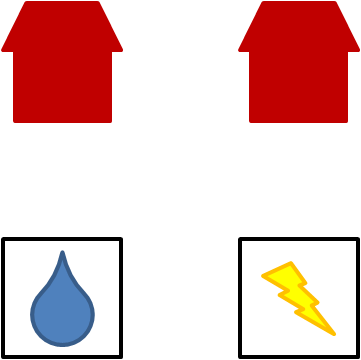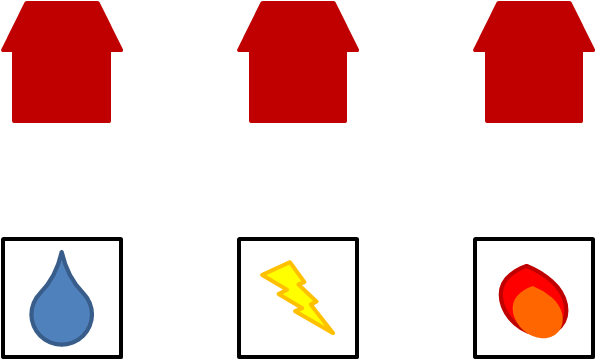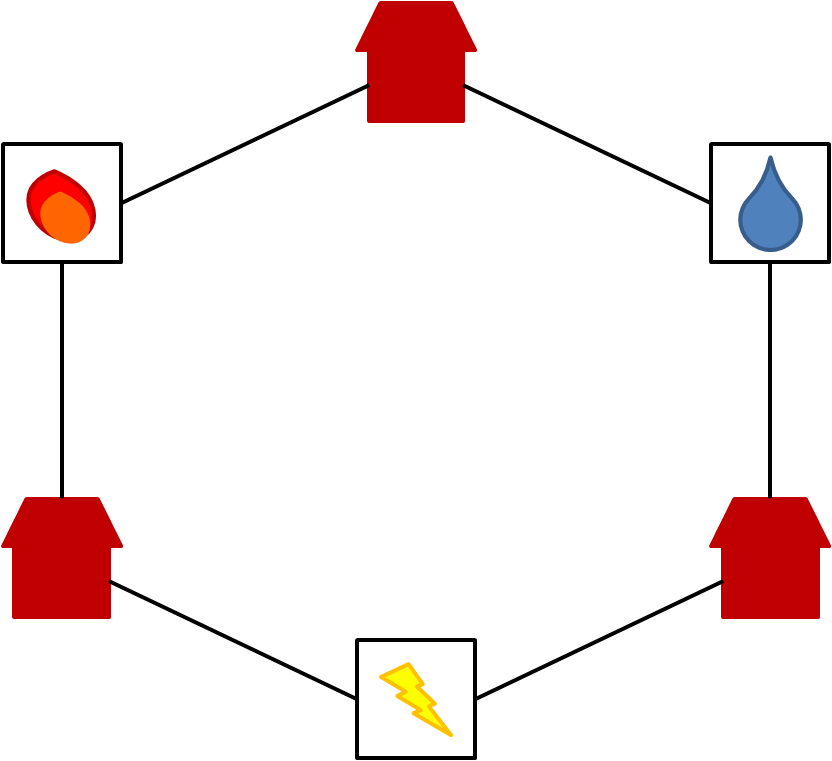Skip over navigation
Or search by topic
Number and algebra
Geometry and measure
Probability and statistics
Working mathematically
Advanced mathematics
For younger learners
Connecting the Utilities
Age 11 to 16
Challenge Level 





In the picture below, there are two houses that need to be connected to water and electricity.

The pipes/wires must not cross each other, and you can't go through one house to get to the other house. Can you find a way to connect them?
What if there were three houses? Or four? Or...
How many houses is it possible to connect to the two utilities, without requiring two lines to cross?
The Gas company wish to connect the houses to the Gas supply as well.
Here's a diagram showing the first two houses again:

Can you find a way to connect them to water, electricity and gas without any lines crossing?
What if there were three houses?

You might wish to arrange the houses and utilities around a circle like this:

Find a way to connect three houses to three utilities, or come up with a convincing explanation why it can't be done!

The pipes/wires must not cross each other, and you can't go through one house to get to the other house. Can you find a way to connect them?
What if there were three houses? Or four? Or...
How many houses is it possible to connect to the two utilities, without requiring two lines to cross?
The Gas company wish to connect the houses to the Gas supply as well.
Here's a diagram showing the first two houses again:

Can you find a way to connect them to water, electricity and gas without any lines crossing?
What if there were three houses?

You might wish to arrange the houses and utilities around a circle like this:

Find a way to connect three houses to three utilities, or come up with a convincing explanation why it can't be done!

